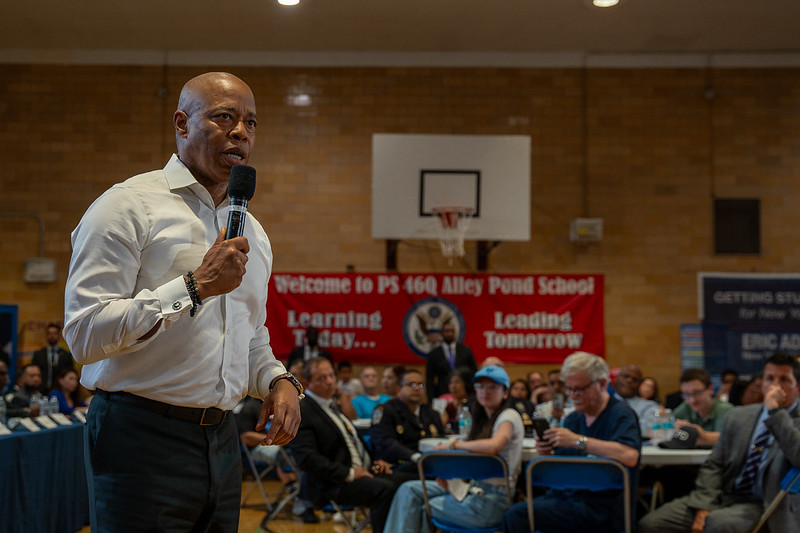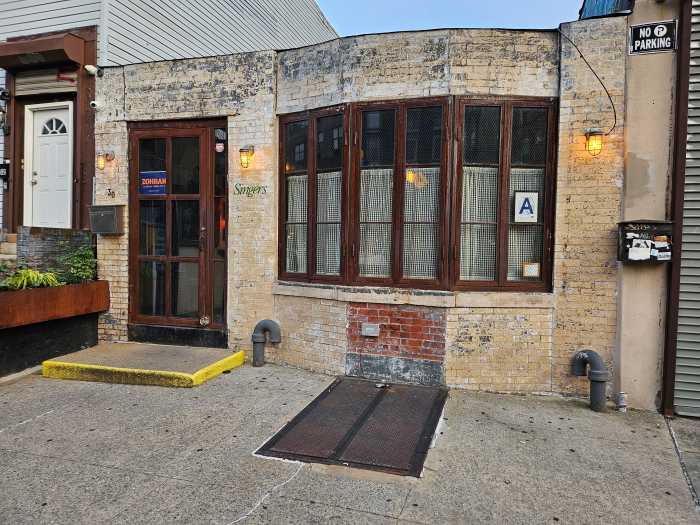Gays can’t cotton to exploitation
To The Editor:
Re “Rep. Kucinich gets ovations at the Center” (news article, Dec. 10):
Thank you for your excellent coverage of the recent rally by the Gay and Lesbian Independent Democrats and UNITE with presidential candidate Dennis Kucinich to demand workers’ rights at the H&M clothing store.
It’s heartening to see that an alliance has formed between activists from labor and L.G.B.T. organizations in order to clarify what it means to say “Equal rights for all.”
The many dollars that the queer community spends at H&M have helped to make the owners of H&M rich. In developing nations like Indonesia and Thailand, though, workers sewing H&M clothes are paid $1 per day. It’s my understanding that in the U.S., H&M pays wages below the poverty level and has fired workers who want to join the union UNITE.
L.G.B.T. workers are also L.G.B.T. consumers. It’s high time that our community not only demand respect for gay people in the workplace, but also use our buying power where it can have significant influence on other human rights issues. I hope other gay groups join GLID and UNITE in telling H&M and other retailers that market to our community that we’re informed consumers and that we demand that they respect queer rights, workers’ rights and human rights everywhere.
Lorna Gottesman
Market process was already cooking
To The Editor:
Re “Gansevoort Historic District gets final approval from city” (news article, Dec. 17):
While I would be proud to claim credit for first proposing the Gansevoort Market Historic District three years ago, I absolutely cannot. I have only been executive director of the Greenwich Village Society for Historic Preservation and Save Gansevoort Market since January 2002. Save Gansevoort Market and its campaign for a Gansevoort Market Historic District was founded in 2000 by Jo Hamilton and Florent Morellet — Florent and Jo are the pioneers who founded this great effort and put together the winning coalition, building upon years of effort and advocacy by countless Villagers and preservationists to help finally achieve this long-overdue goal.
Now we all need to pull together to finish the job: ensure Gansevoort Market is protected, including its mix of uses and its undesignated blocks; save the Far West Village from rampant overdevelopment; and fight to preserve the historic South and East Village, which are almost entirely lacking in historic district protections.
I certainly don’t want to claim any credit that is more appropriately due to others.
Andrew Berman
Berman is executive director, Greenwich Village Society for Historic Preservation and Save Gansevoort Market
No more soulless housing
To The Editor:
As more and more residents of the Lower East Side discuss the pros and cons of more low-income housing, I think we need to think of this in the perspective of what was done post-W.W. II with Robert Moses and Title I.
As John Cheever wrote: “…slums are being demolished…[but] the rectangular tenements that replace them have not a trace of invention. Their bleakness is absolute. No man has ever dreamed of a city of such monotonous severity, and there must be some bond between our houses and our dreams.”
The social critic Ernest van der Haag wrote: “Housing developments instead of replacing slums have more often displaced them, i.e., shifted their location. More important, they are no less sterile esthetically than the slums were. In some ways the sterility is more awesome because it seems so orderly, seamless, and therefore ineluctable. Both the physical and social structure of housing developments are designed to prevent spontaneity and variety; they succeed altogether in blocking the communal feeling and the liveliness that was the one redeeming feature of at least some slums.”
Yes, public housing offered some a genuine step in the first decent housing many had known. There was a price to pay though for the city and the nature of Title I meant tearing down thousands of existing apartments and putting its occupants out of homes. These new projects were built soundly and solidly but on an enormous scale but, hey, lacked a soul.
Perhaps any building to go on the Seward Park Urban Renewal Area sites should be built with a combination of public and private monies. Perhaps new housing in this neighborhood should be limited to that of the Orchard/Ludlow St. scale, replacing what was once lost. Keep it true to the history of the neighborhood versus the crap being built all over this city, such as Sixth Ave. in the 20s.
I believe that though some good came out of the Robert Moses period of New York, I don’t think he liked cities. I don’t think urban renewal worked. It never needed forcing.
I pray we help let the soul that lives down here come out naturally through markets, as opposed to being forced by Community Board 3 members wanting to leave a mark. They are not Robert Moses and, yes, it is a shame that the housing torn down has not been replaced. Let it be done wisely.
John Sosnowski





































